How to make a nuclear reactor in the kitchen
 Bashny.Net
Bashny.Net
Recently, all the world news has reported that a simple Swedish man gathered in his kitchen a nuclear reactor of handy tools. And then came the relevant ministries to clarify - because it did not violate the law? During the period of his honesty not soldered, but reator away. As he did so, he told in detail. Translation provided berk
8 photos and letters.
What do you need?
Of course, it depends on how efficient you want to have a nuclear reactor. I did a few options. I'll tell you the basics, and you, if you want, you can continue to experiment.
So. Good to have when working with radiation Geiger counter. It costs between $ 300 and 10 000, depending on the sensitivity. But for our purposes it is enough of a simple, one might say - domestic.
Then you need some radioactive materials, and the biggest hemorrhagic, because stores are not sold.
But there are also radioactive materials around us. The most common and readily available source of radioactive elements - smoke detectors. They (the ionization type, not optical) contains a very small amount of the isotope Am-241 (americium). Am-241 is an alpha emitter with a half life of 432 years. Then, another common (and stronger) element is an alpha emitter Ra-226 (radium). It can be found in some of watch movements, which were made before the 50s.
It was used for samopodsvetki hours. He was later banned from use because it decided that it was too dangerous.
I was producing and americium in smoke detectors, and radium in hours. It is easy to
Even I borrowed moderately expensive Geiger at MChSniki and nakovyryat americium from smoke detectors - 35 kBq.

My Geiger counter is not the best, but responds to Am in good faith. It cost about $ 300.
Background radiation was about 40 Bq. But we need not less than 1 MBq, 1 million Becquerel. On 1 MBq it will be released about 30 neutrons with beryllium. So with radium it is much easier.
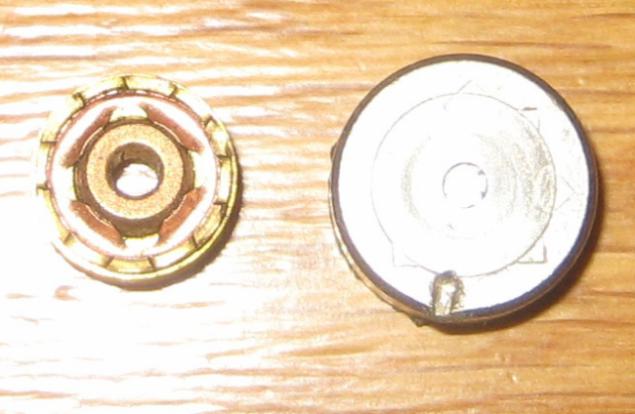
In previous fote - part of the smoke detector that contains Am, is as follows. Of course, only a very small piece contains pure Am.
But radium from an old clockwork.
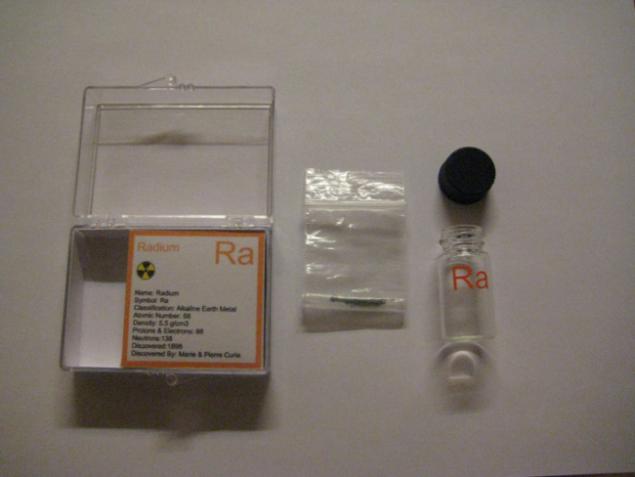
Then we need something that respond to alpha radiation, because we somehow need to knock neutrons. Aluminum is suitable in principle, but best of all - it is beryllium. It is difficult to obtain because it is quite toxic, and its turnover is limited. But look at the elements of the collections on eBay, and so on. F. In the web you can find it for quite reasonable money.
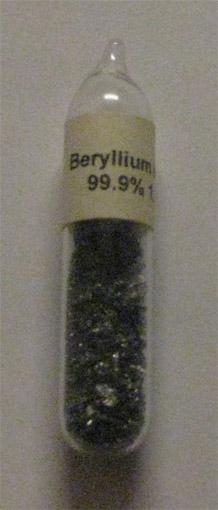
Now we need a lead, in the form of plates, since we do not want the radiation in all directions, only in a certain direction, ie we need a neutron gun. This means you have to put your source of radiation, such as a cube made of lead with one hole where you have is aluminum or beryllium.
Finally, we need the fissile isotopes. They never sell, because having them a certain amount, we can build a nuclear weapon. But it is fairly easy to produce fissile isotopes themselves. For example, Th-232, thorium, can be found in some lamps, or tungsten electrodes for welding. Recognize the electrode can be for symbols and Colour code that set the standard. Electrodes designation WT-40 Orange Colour code and contain from 3 to 8, 4, 2% thorium oxide.
If we need thorium, rather than just itching drank a file electrode, then pay attention to the color-coded - take only orange!
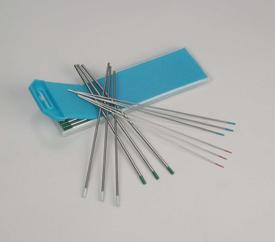
Then you have to put it all together, it's not hard. Mix Americium / Radium with aluminum / beryllium, and then move on to the neutron gun. Make a capsule lead with one hole. And of course, it is best if you can lay a couple of layers of paraffin over the undesirable direction. Paraffin is a good absorber of neutrons.

Here is a more secure option neutron gun. Old jar medicines, glass tube in the middle, covered with a layer of lead is about 1 cm ...
Then, take the stuff that you want to split the atom. If you already have fissile material, you do not need to do anything else. But we must transmute into fissile material is non-cleavable. Assume of Th-232 and U-238.

Process
If you have a Th-232, the response will look like:
Th-232 + n --- & gt; Th-233, which have a half-life of only 22, 3 minutes, and then splits into Pa-233 (Protactinium), which then decays to the U-233, which is fissionable. The overall reaction is as follows:
Th-232 + n --- & gt; Th-233 (T2 = 22, 3 min) - (beta-decay) --- & gt; Pa-233 (T2 = 27 days) --- (beta-decay) - - & gt; Of U-233
Of U-233 is fissile, and has a half-life of about 1 590 000 years.
If you push down on the first, for example, depleted uranium, U-238, the response will look like:
U-238 + n --- & gt; U-239 (T2 = 23, 45 minutes) - (beta-decay) --- & gt; Np-239 (T2 = 2356 days) - (beta-decay) - - & gt; Pu-239
Pu-239 is fissile, and has a half life of about 24 110 years.
Th = Thorium
Pa = Protactinium
U = Uranium
Np = Neptunium
Pu = Plutonium
Note that the latter process will produce plutonium, which is one of the most carcinogenic and toxic inorganic substances.
Still, you may need a moderator who controls the speed of the neutrons. The easiest material graphite. Take about 100 graphite pencils and connecting slate, vary the thickness. Heavy water moderator is also very good, but it's expensive. And well, it tries
The collapse on my plate! I tried to get the best combination of components cooking (ha ha), americium, radium and beryllium in 96 percent sulfuric acid.
We had to use salt. But the mind is clouded and there was a such garbage! Of course, I will not drink juice syrup (right in the photo), and I threw my pills (left in the photo).
Posted in [mergetime] 1312355314 [/ mergetime]
Thank you, the reactor is assembled!
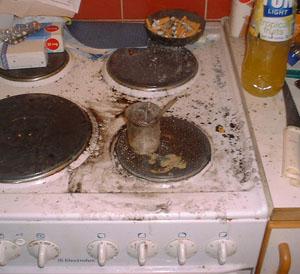
Source:
8 photos and letters.
What do you need?
Of course, it depends on how efficient you want to have a nuclear reactor. I did a few options. I'll tell you the basics, and you, if you want, you can continue to experiment.
So. Good to have when working with radiation Geiger counter. It costs between $ 300 and 10 000, depending on the sensitivity. But for our purposes it is enough of a simple, one might say - domestic.
Then you need some radioactive materials, and the biggest hemorrhagic, because stores are not sold.
But there are also radioactive materials around us. The most common and readily available source of radioactive elements - smoke detectors. They (the ionization type, not optical) contains a very small amount of the isotope Am-241 (americium). Am-241 is an alpha emitter with a half life of 432 years. Then, another common (and stronger) element is an alpha emitter Ra-226 (radium). It can be found in some of watch movements, which were made before the 50s.
It was used for samopodsvetki hours. He was later banned from use because it decided that it was too dangerous.
I was producing and americium in smoke detectors, and radium in hours. It is easy to
Even I borrowed moderately expensive Geiger at MChSniki and nakovyryat americium from smoke detectors - 35 kBq.

My Geiger counter is not the best, but responds to Am in good faith. It cost about $ 300.
Background radiation was about 40 Bq. But we need not less than 1 MBq, 1 million Becquerel. On 1 MBq it will be released about 30 neutrons with beryllium. So with radium it is much easier.

In previous fote - part of the smoke detector that contains Am, is as follows. Of course, only a very small piece contains pure Am.
But radium from an old clockwork.

Then we need something that respond to alpha radiation, because we somehow need to knock neutrons. Aluminum is suitable in principle, but best of all - it is beryllium. It is difficult to obtain because it is quite toxic, and its turnover is limited. But look at the elements of the collections on eBay, and so on. F. In the web you can find it for quite reasonable money.

Now we need a lead, in the form of plates, since we do not want the radiation in all directions, only in a certain direction, ie we need a neutron gun. This means you have to put your source of radiation, such as a cube made of lead with one hole where you have is aluminum or beryllium.
Finally, we need the fissile isotopes. They never sell, because having them a certain amount, we can build a nuclear weapon. But it is fairly easy to produce fissile isotopes themselves. For example, Th-232, thorium, can be found in some lamps, or tungsten electrodes for welding. Recognize the electrode can be for symbols and Colour code that set the standard. Electrodes designation WT-40 Orange Colour code and contain from 3 to 8, 4, 2% thorium oxide.
If we need thorium, rather than just itching drank a file electrode, then pay attention to the color-coded - take only orange!

Then you have to put it all together, it's not hard. Mix Americium / Radium with aluminum / beryllium, and then move on to the neutron gun. Make a capsule lead with one hole. And of course, it is best if you can lay a couple of layers of paraffin over the undesirable direction. Paraffin is a good absorber of neutrons.

Here is a more secure option neutron gun. Old jar medicines, glass tube in the middle, covered with a layer of lead is about 1 cm ...
Then, take the stuff that you want to split the atom. If you already have fissile material, you do not need to do anything else. But we must transmute into fissile material is non-cleavable. Assume of Th-232 and U-238.

Process
If you have a Th-232, the response will look like:
Th-232 + n --- & gt; Th-233, which have a half-life of only 22, 3 minutes, and then splits into Pa-233 (Protactinium), which then decays to the U-233, which is fissionable. The overall reaction is as follows:
Th-232 + n --- & gt; Th-233 (T2 = 22, 3 min) - (beta-decay) --- & gt; Pa-233 (T2 = 27 days) --- (beta-decay) - - & gt; Of U-233
Of U-233 is fissile, and has a half-life of about 1 590 000 years.
If you push down on the first, for example, depleted uranium, U-238, the response will look like:
U-238 + n --- & gt; U-239 (T2 = 23, 45 minutes) - (beta-decay) --- & gt; Np-239 (T2 = 2356 days) - (beta-decay) - - & gt; Pu-239
Pu-239 is fissile, and has a half life of about 24 110 years.
Th = Thorium
Pa = Protactinium
U = Uranium
Np = Neptunium
Pu = Plutonium
Note that the latter process will produce plutonium, which is one of the most carcinogenic and toxic inorganic substances.
Still, you may need a moderator who controls the speed of the neutrons. The easiest material graphite. Take about 100 graphite pencils and connecting slate, vary the thickness. Heavy water moderator is also very good, but it's expensive. And well, it tries
The collapse on my plate! I tried to get the best combination of components cooking (ha ha), americium, radium and beryllium in 96 percent sulfuric acid.
We had to use salt. But the mind is clouded and there was a such garbage! Of course, I will not drink juice syrup (right in the photo), and I threw my pills (left in the photo).
Posted in [mergetime] 1312355314 [/ mergetime]
Thank you, the reactor is assembled!

Source:
Tags
See also
How to make your home green
How to make a wooden countertop for the kitchen with their hands: step by step instructions
How to handle?
This guy will show you how to make glow in the dark table. No magic, everything is very simple!
15 secrets of how to make the dish even tastier
How to make a convenient carrying case for glasses for 10 minutes
How to make from your old Android smartphone home alarm system?
















